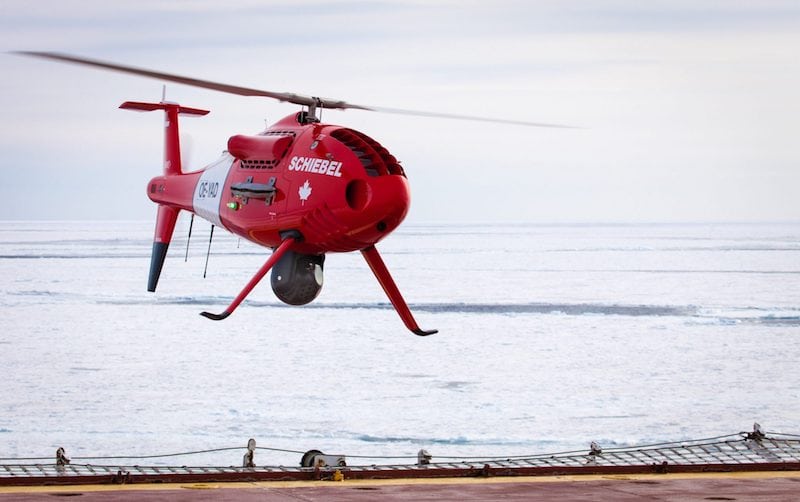
Photo courtesy of Shiebel
The FAA said FlightScan Corp. wants to certificate the Camcopter S-100, a helicopter-shaped unmanned aircraft system originally from Schiebel. The agency is now looking for public comments on proposed airworthiness criteria for the drone. This is a “first,” according to the agency.
FlightScan applied June 1, 2015, for a special class type certification. The FAA is now asking for comments on proposed design standards for the drone to fly in controlled airspace.
“The ultimate goal of this and other projects is to grant FAA airworthiness certification to fully functional, ready-to-operate unmanned aircraft,” the FAA said. “The S-100 is the first unmanned aircraft to have its certification basis published.”
Camcopter S-100 is powered by a liquid-cooled rotary engine and has a maxiumum takeoff weight of 440 pounds, according to the FAA. It is used mostly to inspect power lines.
According to the FAA, the agency evaluated the following operational considerations when composing the notice:
- The S-100 operates in a designated corridor and area within the right-of-way of the power transmission lines and is operationally limited to 100 feet above and laterally within 100 feet of the power line it would be surveying.
- There is minimal population exposure within the power transmission line right-of-way, but the mission path would cross several public highways and pass close to several neighborhoods with population densities of less than 950 people per square mile.
- The S-100 would operate beyond-line-of-sight for this UAS.
- The radio control uplink and downlink would operate within frequencies approved by the Federal Communications Commission.
- This S-100 is designed to operate both autonomously and manually by the pilot-in-command
- Minimum crew includes one pilot-in-command, one mission specialist and one mission flight director.
- The minimum crew would operate only one S-100 at any time.
- The aircraft would remain within radio line-of-sight of the control station.
- The control station would be ground based.
- All crew would be FAA-certified airmen with current and applicable medical credentials.
- All crew would successfully complete required crew training.
- Maintenance personnel would hold appropriate FAA maintenance certificates.
- Maintenance personnel would complete required maintenance training.
The period of comment ends Dec. 18, 2017.
“We consider these proposed criteria to be interim because we anticipate the evolution of new operational criteria will necessitate additional airworthiness criteria in order to allow for the operation of the Camcopter S-100 in the National Airspace System,” the FAA said in its notice.